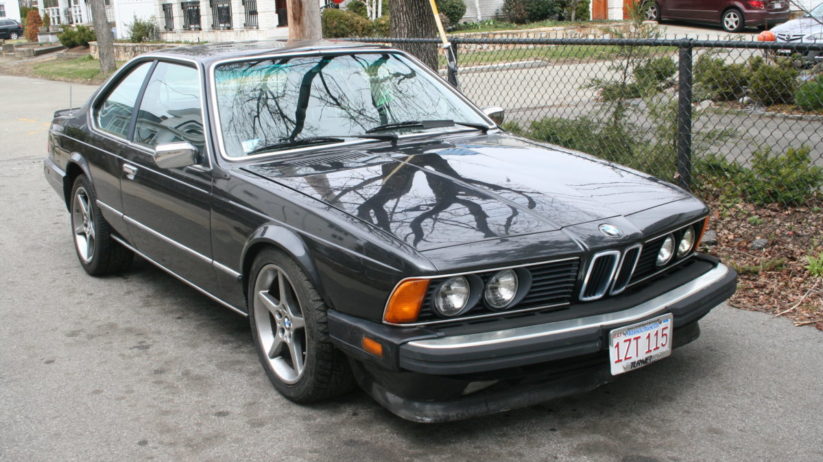You may recall the piece I wrote last fall about winding up with a free black-on-black 1985 635CSi five-speed. To recap, my son’s girlfriend’s father (MSGF), mainly an ’80s Mercedes guy, had first obtaied the car from, curiously, his son’s girlfriend’s father (HSGF?), but had recurring problems with it. He’d occasionally call and ask my advice, but his Mercedes mechanic was the main brain on the job.
Then, last fall, MSGF called me and said, “I’m done with the car. You want it? Like, for free?”
I was, as you might imagine, taken aback. He described a combination of no-start, dying, and rough-running problems that caused the car to wind up on a hook several times too many, generating unending repair bills from the Mercedes mechanic, who threw crankshaft, speed, and oxygen sensors at it and swapped the ECU, but apparently could not figure out the root causes.
“Can I look at it before I give you an answer?” I asked. “Because, as you know, the only thing more expensive than a free BMW is a free boat.”
He laughed. “Of course you can look at it,” he said.
A quick trip to the mechanic’s shop in Tewksbury, and I was face-to-face with the Black Shark. Part of me hoped that it was rusty junk so I could either walk away from it or yank and sell its Getrag 265 transmission and crush the rest, but it was… actually, not bad, with only some light rust bubbling on both rear wheel arches and some rust weakness in the right floor. And, with the black-on-black color scheme and front and rear air dam, it certainly had presence.
And E24s are all about presence.
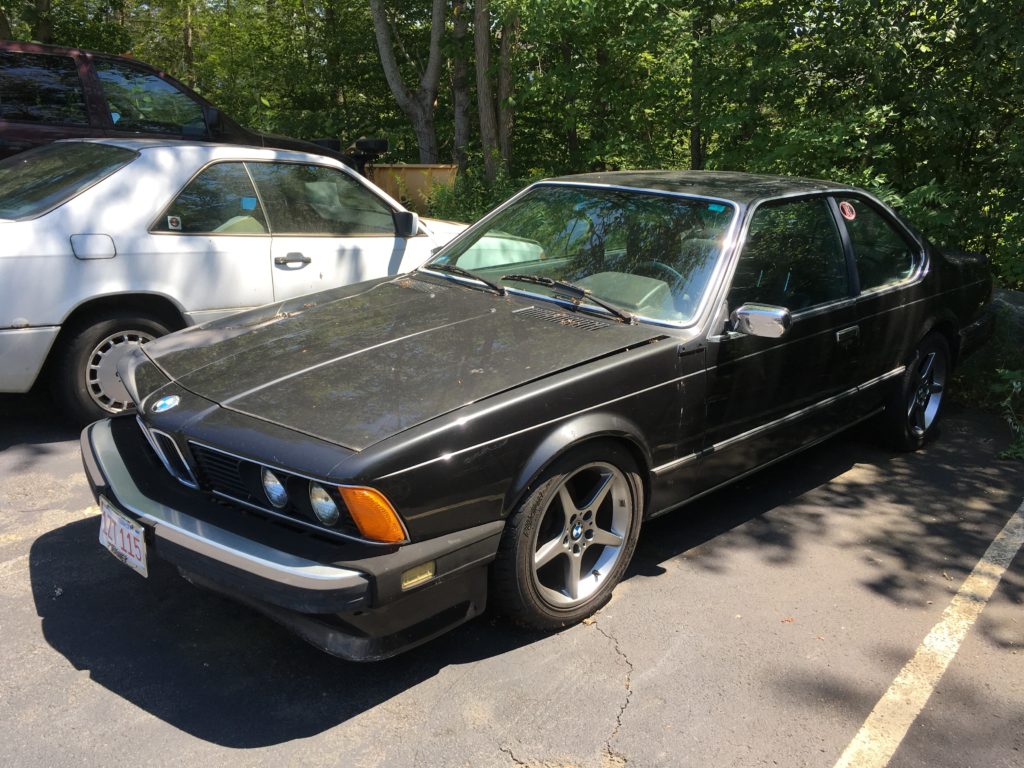
So I did what you’d expect me to do when someone offers me a free dead Black Shark with a five-speed and minimal rust: I said yes. MSGF had AAA tow it to my driveway. I moved my Winnebago Rialta and rolled the Black Shark down to the end, then parked the Rialta in front of it, which was my way of saying, “Sweet dreams, see ya in the spring.”

Sometime in mid-April, when the snow had finally melted off the car, I drew myself up to my full height, as Dan Erwin said in “Crusty Goes West,” and with my best dominance posture in display, approached the Black Shark.
What I saw wasn’t pretty.
The car had been left in the state a car is left in when a client says “Stop” to a mechanic. The glovebox was in the back seat; the ECU was hanging down from under the dash. The fan and fan shroud were also in the back seat (the back seat was apparently the place where the cool wayward components were hanging out, drinking beer and smoking Marlboros). The cap and rotor were on the front floor, and the plug wires were all hanging in front of their exposed recess at the front of the engine. The air-flow meter and air cleaner were in the trunk. This was not a graceful exit; no buttoning-up had been performed. I felt bad that I’d let the car sit like this through the winter.

Further, there were several places were the wiring harness had been sliced open. I surmised that the mechanic was using a site like Alldata and probing key wires for the presence of voltage. (This was later confirmed by finding an Alldata printout in the glovebox). I found this curious; cutting open a wiring harness is the last thing I would do, not the first. I thought that if this was the level of intervention being applied by a professional, something must really be fubarred.
But, hey, one thing at a time, right? I removed handfuls of leaves and acorns that any hood or trunk crevice inherits from outside living, and began reassembling things.
I was about to re-install the Motronic rotor and cap when I looked at them closely. The cap had a fair amount of corrosion on the contacts for the coil and plug wires, but it was the rotor that gave me pause. The center contact—the flat spot against which the spring-loaded contact from the cap presses—is supposed to be about three eighths of an inch across, but instead, what I saw was only the size of a pencil lead.
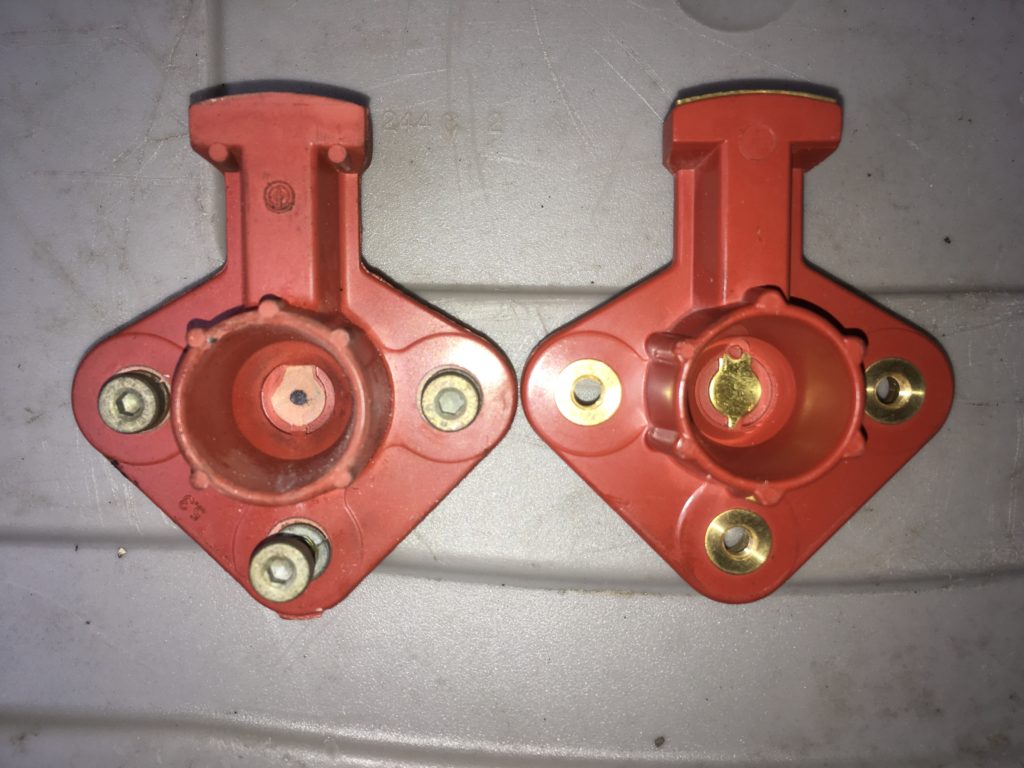
Center contact on right: Good. Center contact on left: Wait. Where is it?
I thought, “Well, that could be the source of the no-start and dying problems right there.” I’ve read horrible things about cheap off-brand cap/rotor sets, so I spent the $75 for proper Brembi components. While I was waiting for the parts to arrive, I re-mounted the ECU and put the glovebox back together.
When the cap and rotor came, I installed them, then re-installed the fan and shroud. The fan’s viscous coupling felt weak, but you really need to wait and see if it stiffens up as the temperature rises. (Get your mind out of the gutter.)
I verified that the engine had oil that didn’t look too disgusting—in fact, it looked recently changed—confirmed that the gas didn’t smell like varnish, connected the air-flow meter, removed the flat-lined battery, took a battery out one of my other cars and dropped it in, opened the air-flow meter’s door, gave it a good blast of starting fluid, and turned the key.
Vroom, baby.
Well, okay.
That vroom, though, was quite loud. Feeling with my hands, I easily traced the source of the noise to a major exhaust leak coming from between one of the exhaust manifolds and its attached headpipe.
M30 engines are not known for champagne-glass-on-the-engine-smooth idle, but this one seemed especially labored. And when I revved it in the driveway, as soon as it came off the idle switch, it stumbled pretty badly. Still, a quick look under the nose confirmed that there were no copious puddles of anything forming. This was really pretty darn good for a first encounter.
The next day I started the Black Shark and backed it out of the spot where it had been sitting since last fall. As I say in Ran When Parked, you can actually learn a great deal by moving a car three feet. The car’s clutch was incredibly stiff, but in the “someone installed a stiff clutch” way, not in the “something’s binding” way. The brakes cracked and groaned as the rotors, initially stuck to the pads from their outside sojourn, broke free and began turning. The brakes were functional enough to slow the car.
So, out of the driveway—maybe around the block? Yeah.
Ten feet, then 50. Hey, look: the Black Shark is swimming! I could hear and feel the pads wiping the rust off the rotors as I applied the brakes. The car drove and shifted fine, and didn’t obviously pull on braking. And when I put my foot into it, it moved out right quick.
But at low-rpm steady throttle, something was clearly wrong, as the car hesitated and stumbled. And that hesitation and stumbling was amplified by the loud exhaust. Part of me thought, “It’s running—sell it right now!” but sometimes I can’t resist a little mystery or a small challenge.
All sorts of running problems on Motronic cars can come from vacuum leaks and a bad temperature sensor, but the intake bellows wasn’t split and the vacuum hoses all appeared intact. I ohmed the temperature sensor out and it seemed okay, but the sensor is only a $15 part, so I replaced it. No difference.
I spoke with CCA Tips Rep and friend Paul Muskopf, who advised that one or more of the injectors might be clogged or otherwise defective. He said that I could try spraying carb cleaner into a vacuum line while tapping on the injectors with a screwdriver. I tried it, but detected no change.
I unplugged each injector and checked that none of the solenoids were burned out by using a multimeter to verify that the impedance was about 16 ohms on each. I listened to each injector with a mechanic’s screwdriver and made sure that I could hear all of them opening and closing. Unfortunately, those steps don’t tell you if the injectors are spraying, and what the spray patterns are.
I watched a very good YouTube video of a guy who uses a fuel-pressure gauge and a $30 injector pulser to verify that the pulsing of each injector drops the fuel pressure by about the same amount. I almost ordered the injector pulser, but then I found someone on eBay with a good feedback rating selling rebuilt sets of six Bosch injectors—the newer-style ones with four nozzles instead of one—for $80. I loved the idea of simply yanking the fuel rail and replacing all six injectors with cleaned and tested known-good ones. I ran this past Paul, and he agreed that it wasn’t a bad approach.
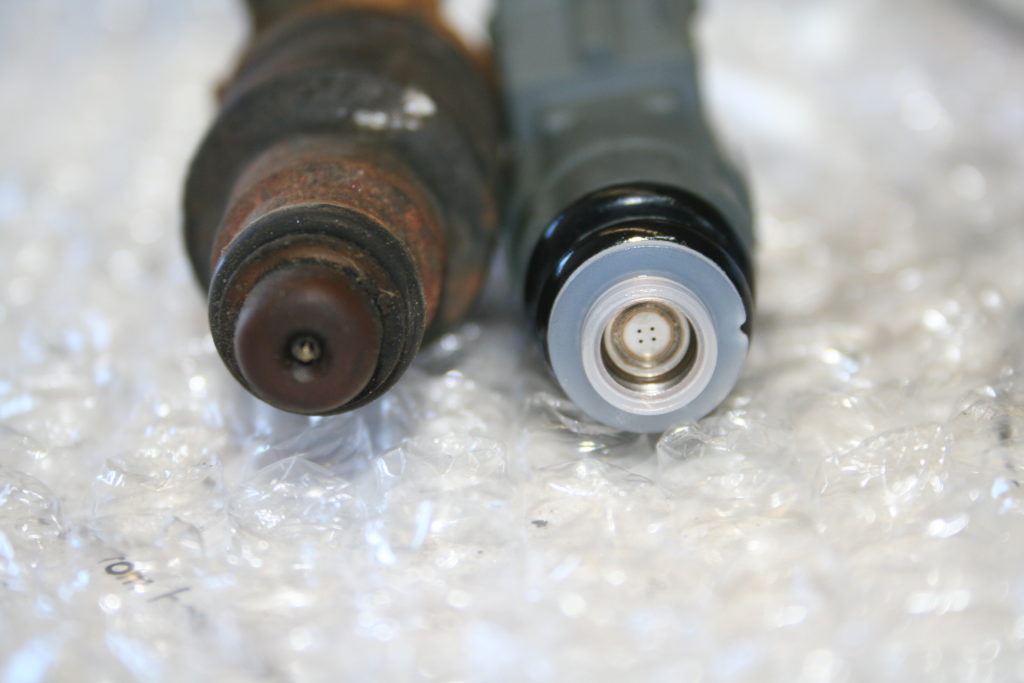
Original single-nozzle (left) and rebuilt four-nozzle injectors.
I put the car up on the lift and dropped the headpipes from the exhaust manifold. What came out was laughable; there are supposed to be triangular gaskets with thin metal sealing rings in the center, but on both of the headpipes, just about all that was left was the ring. It was a wonder that only one of the two gaskets was leaking. Two new gaskets completely solved that problem.
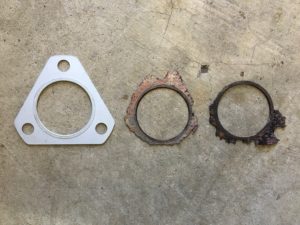
New (left) and old (center and right) manifold-to-headpipe gaskets. Sheesh.
With the new injectors installed and the exhaust quieted down, the car was much better-mannered. It stumbled and hesitated less and was far quieter, but something still seemed slightly amiss at low-to-mid-rpm steady throttle.
Some folks pointed me at posts that discussed a known problem of cracked solder joints in the ECU producing a weak spark, but the Black Shark’s problem seemed so load-specific that I suspected the air-flow meter. These are basically just resistance-track devices whose functionality you can test with a multimeter, but when I examined mine, I was surprised to find that it had a script-in-oval Ford logo embossed in the plastic cover. I ran the part number, and it appeared to be a Cardone-rebuilt unit that cross-references between BMW 3.5 M30-equipped cars and mid-1980s Ford Mustangs and Thunderbirds.
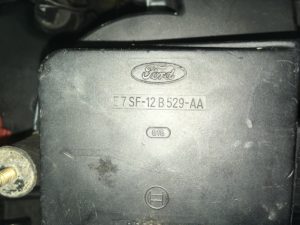
The Ford-logo air flow meter DID cross-reference to a 3.5L M30, but it still didn’t seem kosher.
While this swap of Bosch injection parts didn’t strike me as inherently implausible—indeed, I believe that the injectors I’d installed cross-reference to a Mustang—it was not a swap that I’d heard of, nor had I found it on the forums. The air-flow meter appeared to ohm out okay, but I wondered.
I contacted Big Al Taylor, reptile farmer, entrepreneur, raconteur, iconoclast, and purveyor of used BMW parts, who got me the correct air-flow meter in two days for sixty bucks. I installed it and drove the car.
The even-throttle hesitation and stumbling were gone. Damn.
The Black Shark had quickly gone from dead to starting, from starting to running, from running to driving but stumbling,from driving but stumbling to driving smoothly. I washed the car, and with the grime of winter’s exposure gone, it looked pretty sharp, although the paint needed a deep cleaning.
With the shiny black paint and the 1000 Miglia MM11 seventeen-inch wheels, it certainly had that E24 presence. And driving-wise, it seemed surprisingly good. Clearly, someone had loved this car; it had Bilsteins all around, and what looked like Suspension Techniques springs and sway bars. The ride was firm but surprisingly free of toolbox-in-the-trunk-like thunks, clunks, and rattles. The gearshift was beautifully tight. And—the cherry on the Shark sundae—the dashboard was utterly crack-free.
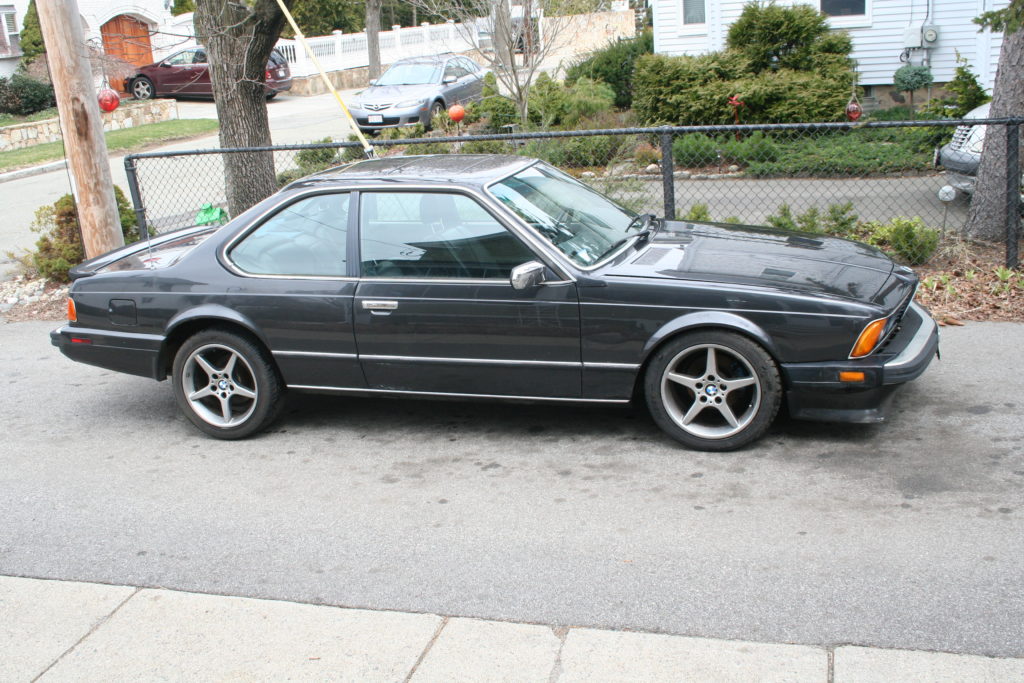
The Black Shark is never going to bring all the money, but it certainly has that E24 presence.
I was now in a funny position with the Black Shark. As you know, I already have another E24—a silver ’79 Euro 635CSi with black stripes that I’m quite smitten by—so the car’s destiny did not appear to be with me. I was just a caretaker.
And the car did still have a punch list. I noticed that the air dam was hanging low; I found that the brackets attaching it were badly bent, probably from a curb impact. I took them off, beat them flat, and reinstalled them.
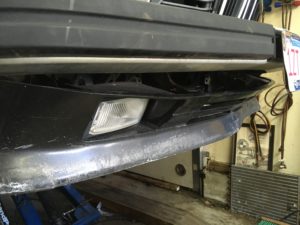
Other punch-list items, though, were not so easily crossed off. Neither the speedometer nor the tach worked. The ABS light was on. The car was dripping a little power-steering fluid. A portion of the headliner under the sunroof was noticeably discolored. The car had an in-dash CD player and a Rockford-Fosgate 800-Watt power amp, but the amp seemed to only turn on at its whim. The car’s a/c was functional, and had R134a charging fittings, indicating that someone had converted it at some point, but it blew barely cold. (I can’t say, “It probably just needs a recharge” with a straight face.) The beefy 235/45-17 tires rubbed the front fenders on tight turns. The back end seemed a bit high, as if the rear springs were mismatched with the fronts. The driver’s-side door glass was a bit misaligned, requiring you to roll the window up while the door was closed.
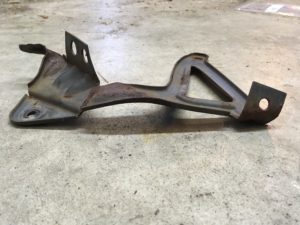
And most important, when the temperature topped 85 degrees in Boston, the car’s temperature gauge began creeping up, settling about three-fourths of the way up the gauge. I checked the fan clutch, and my initial vibe that it seemed weak was correct; it wasn’t stiffening up with increasing heat. (Mind. Gutter. Out.)
I ordered a $25 Chinese-made fan clutch on eBay, but was hesitant to commit to chasing a warm-running issue all the way down the rabbit hole, as it could involve the radiator, the auxiliary fan, and sensors.
And there was the paperwork issue. I’d been given the car by MSGF; with that came his unsigned title. But the car had simply been sitting in my driveway. I’d never titled, registered, insured, or inspected it. So, now that I’d rolled the stone away and the Black Shark had risen, what should I do with it?
Part of me wanted to make the car legal so that I could drive it farther than just circles around the block and really sort it out (my risk tolerance for anything that could cost me my house if it went sideways is through the floor these days). But I also sensed that despite the car’s presence, the rust it had, though modest, would seriously cap its value. Plus, although E24s can bring bucks if they’re near-perfect cars where both the interior and exterior absolutely pop, even if I punched out the Black Shark’s entire punch list, it still wasn’t going to be a car that brings all the money.
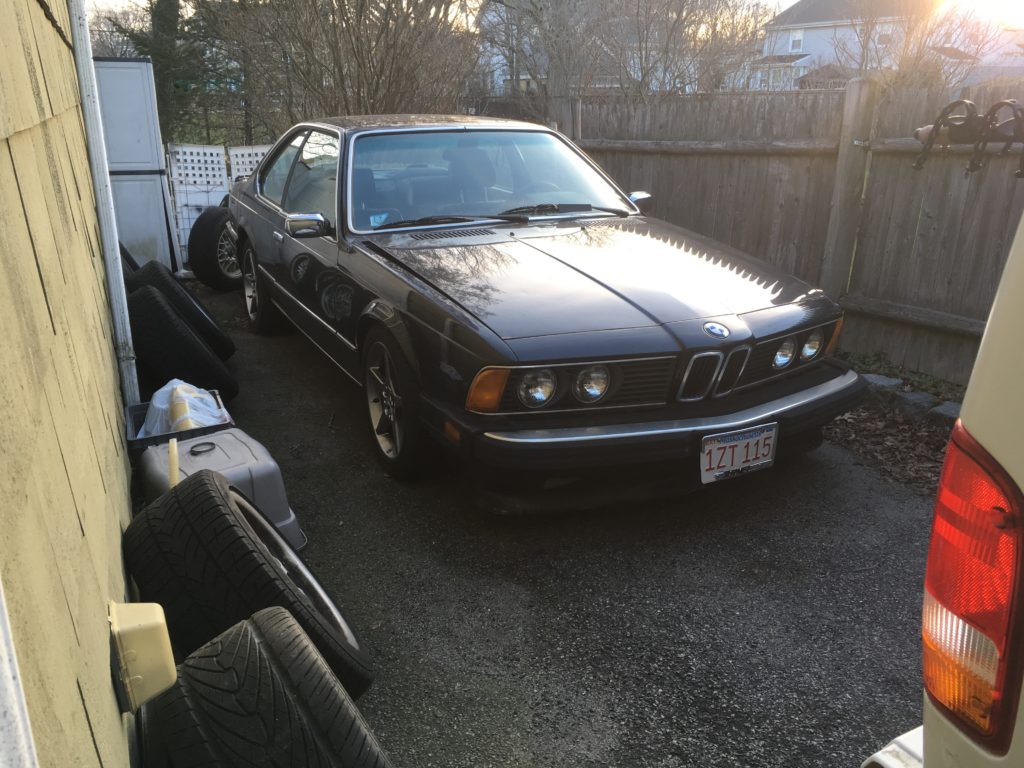
I decided that I’d photograph the car thoroughly, outside, inside, and underneath, describe it honestly with the kind of ad I take pride in writing (the kind that forestalls someone driving for two hours, looking at it, and 30 seconds later, saying, “Well that was a complete waste of time!”), price it at $3,750 so an enthusiast on a budget might grab it, and float it on Facebook to see if the value seemed right. If it didn’t sell, I’d make it legal, do more sorting out, and try Bring A Trailer.
My Facebook post generated a lot of attention. If you put a car up for sale and it goes in fifteen minutes, you priced it too low; while that didn’t happen, the consensus seemed to be that the car was very well-priced. There was the traditional smattering of “If I were a thousand miles closer,” “If I didn’t already have a full garage,” and, of course, “I would, but my wife will kill me.” My friend Scott Aaron summed it up: “The presence-to-dollars ratio is off the charts.”
That night a local young man contacted me, hot and heavy to meet the Black Shark. We arranged for him to come the following afternoon. Fifteen minutes before the appointment, he called and cancelled, saying that while he really wanted the car, the logistics of money, garaging, and marital harmony were tangling him up.
But the next evening, I got a call from a young man in Nashua who said that he’d buy it sight-unseen at my asking price. He complimented me on the honesty of my ad, said that he had a couple of E30s and E46s; he was looking to get into a shark, and understood that the car had a punch list. After we got off the phone, he PayPalled me a deposit.
So, as I submit this, that’s where we are. Tune in next week and see if I open with, “Well, it all fell through.”—Rob Siegel
Rob’s new recent book, Just Needs a Recharge: The Hack MechanicTM Guide to Vintage Air Conditioning, is available here on Amazon. Or you can order personally inscribed copies through Rob’s website: www.robsiegel.com.

